Well, it certainly has been a wet winter. There’s mud everywhere. This presents some challenges. Keeping horses in stables a bit longer can help preserve the precious pastures, and at the same time help reduce the risk of mud fever and thrush, infections that thrive in wet conditions.
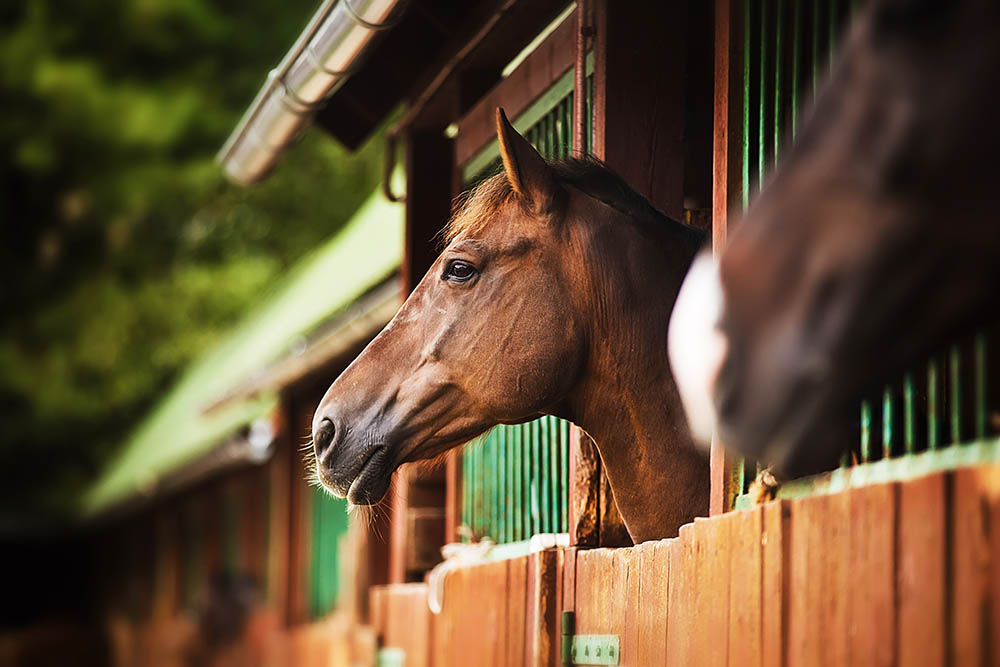
Of course, we know that horses are best managed with long hours of grazing, and the company of other horses. But there are times when horses are injured or recovering from surgery, or when their pastures are flooded or waterlogged, that this is really not possible.
There are several measures you can take to ensure that if your horse is stabled for extensive periods of time they remain as happy and healthy as possible. Don’t forget the basics. Freely available clean water is important. Some horses love to rinse their mouths out in their water. The leftover food scraps will foul the water if not removed, and algae will grow in waterers which need to be cleaned out at least once a week.
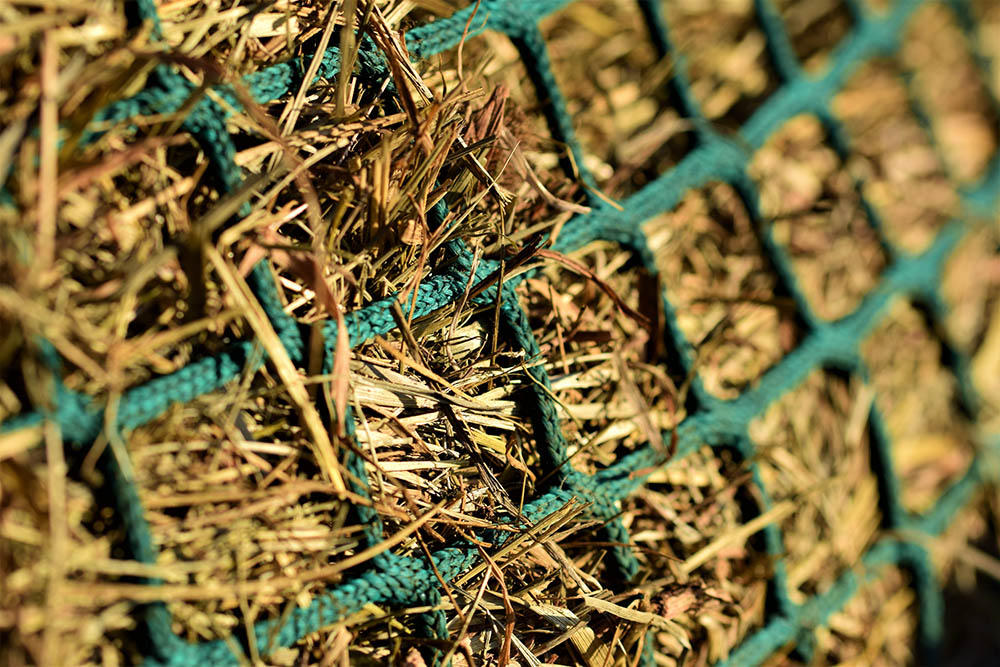
If you are able to you should feed your stabled horse little and often. This is good for his mental health, keeping him occupied, and good for his physical health. Horses have evolved to eat over a 16-hour period. Low nutrition hay is a valuable source of bulk and activity. If your horse likes to gobble his feed down, he may benefit from a slow feeder or slow feeding hay net, which has small holes that he must navigate to pull the hay through in little mouthfuls. Hay is best fed down low, just like pasture. However, if you do use a hay net you must ensure that it is safely tied high enough that he can’t paw it and get his foot or shoe caught up in it.
If it is possible to have your stables set up so that your horses can socialise and even scratch each other, this will help their welfare. Horses are social creatures. They like to have companions. Leave the radio on.

MIRROR TRICKS
A mirror in the stable can also help give the horse an impression of having company and keep them entertained. Recent research conducted in Italy demonstrated that horses shown a mirror will initially react as if their reflection is another horse. However, after they lose interest, possibly realising that there is not another horse in the mirror, if a mark is put on the horse’s head the horse will respond with interest, scratching their faces for five times longer than unmarked horses. This is in fact very important research showing that horses are to some extent self-aware. Horses will recognise that the image in the mirror is of themselves.



This mirror test was first used in the 1970s to demonstrate that human babies recognise themselves in a mirror between 15 and 24 months of age. This varies across cultures. It has since been used to show self-awareness in chimpanzees, orangutans, gorillas, bottlenose dolphins, orcas, magpies, elephants and recently pigs. Dogs fail the mirror test, but do show awareness of their own bodies in other tests. A German group showed that a type of fish, the cleaner wrasse, passes the mirror test. This finding has been interpreted that the mirror test advantages animals that rely heavily on visual information.
Of course, there are toys other than mirrors that can entertain a stabled horse. Some horses will play with a soccer ball for ages. Hanging toys from the ceiling a bit like an apple bobbing game can work a treat. You can use a plastic orange juice bottle that can be suspended from the handle. Cut out a piece of the side and smear the inside with molasses. It is messy, but he will enjoy licking the molasses out of the moving target. He will end up with a messy muzzle – so this is not for horses about to go to shows!
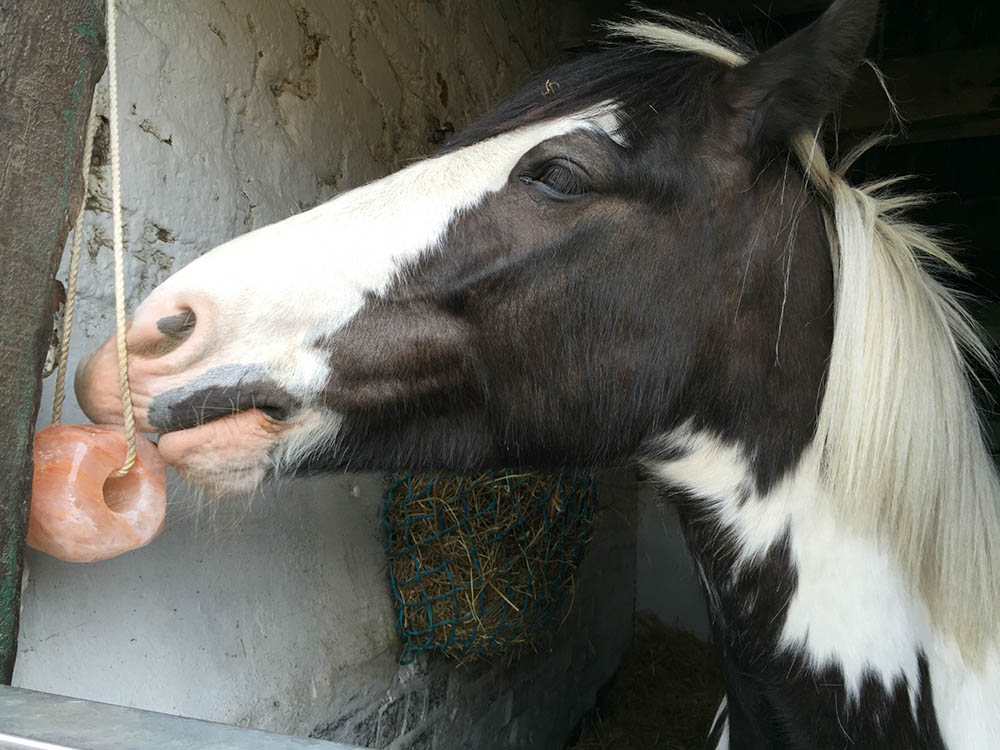
A swede or turnip or rock salt can be suspended through a hole drilled in it. There are commercial toys that you can fill with treats that the horse can roll around and get little pieces of lucerne hay or other nibbles he may like, rather like the Kong that you can buy for dogs. A mineral lick or salt lick can also be entertaining, but some horses will develop a taste for this and chew them in rapid time.
If you can, spend time hand-walking or grooming him, which can also can help build your relationship. Ride him daily when you can but be especially careful to warm up properly if he has to be in the box a lot. A long walk on the buckle until you feel him let go and really relax is my recommendation to start your warm-up. Take time.


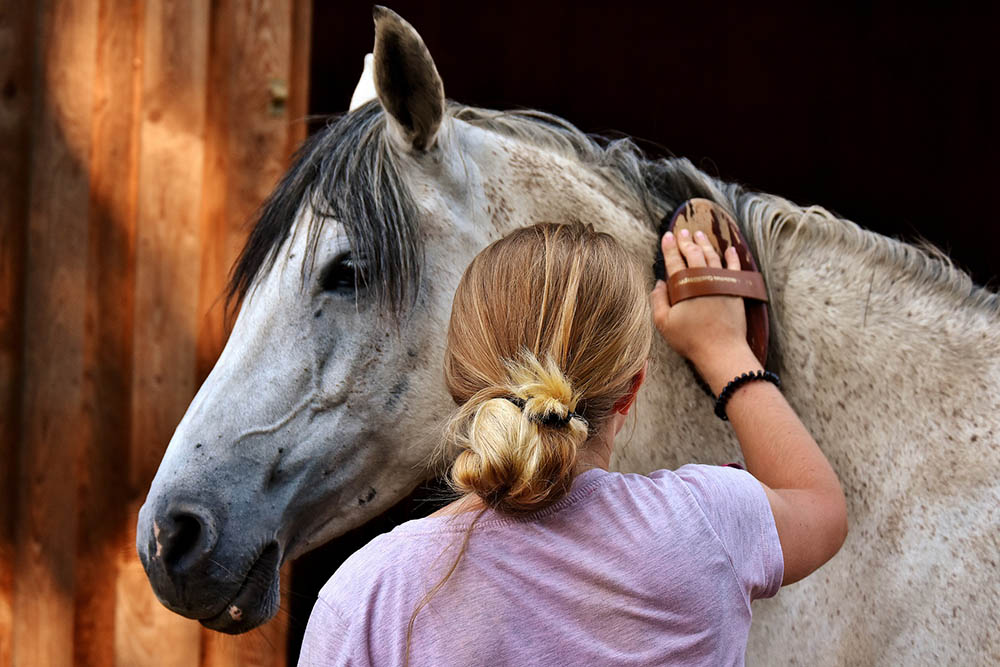
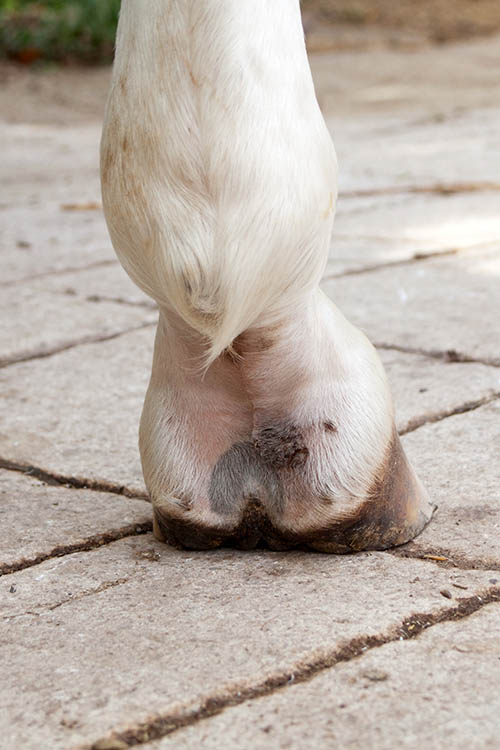
PADDOCK PLATFORM
If you don’t have stables, consider putting a platform of crushed rock on his paddock to let him get out of the mud. Even a roll of old hay will help him keep his feet dry. We have quite a bit of hay that is no good after the heavy rain has spoiled it – perfect for gateways and muddy paddocks as a short-term measure. If you are worried he will eat spoiled hay, spread a bit of horse poo over it.
If winter mud has contributed to development of thrush – a smelly fungal infection in the hoof that tends to start in the side of the frog – you can use diluted bleach, iodine solution (from the chemist) or cider vinegar as an inexpensive initial treatment. Dilute them 50:50 with water. Keep the foot clean and dry as much as possible.

Mud fever is a scabby bacterial infection affecting legs in wet muddy conditions. It is more likely to affect white socks. It is best to soften the scabs, for example by using coconut oil or Vaseline or barrier cream. You can massage the creams in by hand, or apply and wrap with plastic and bandage over the top. When the scabs are soft you can gently rub them off to remove them. Oil and Vaseline are both water repellant and so can help prevent it getting worse. Betadine ointment, Vaseline with sulphur, zinc cream (nappy rash treatment) or a surgical scrub such as chlorhexidine solution 0.1% can all be helpful, but a severe case of mud fever can take months or years of diligent treatment. A range of proprietary antibacterials are available. I was given good advice that it wasn’t so important which antibacterial you use, but use it daily and change it around from time to time. Make sure that you keep the legs dry whenever possible.

Spring is upon us, but it seems we will have mud for quite a long time yet. With a bit of work and care we can keep our horses happy and well. And we sure will all enjoy the drier weather when it comes.
Have fun. EQ
YOU MIGHT ALSO LIKE TO READ BY KERRY MACK:
Why We Love Our Sport – Equestrian Life, July 2022
Getting on the Bit – Equestrian Life, July 2022
Positive Training Really Clicks with Horses – Equestrian Life, June 2022
Learn From Your Mistakes – Equestrian Life, March 2022 issue
Young Horse Classes: A Fun Launching Pad – Equestrian Life, February 2022 issue
Making Sense of all the Bits & Pieces – Equestrian Life, January 2022 issue
The Secret to ‘Soft Hands‘ – Equestrian Life, December 2021 issue
Ask Less, Reward More – Equestrian Life, October 2021 issue
So You Want To Go To The Games? – Equestrian Life, September 2021 issue
The Ins & Outs Of Bitless Bridles – Equestrian Life, July 2021 issue
Taking The Plunge With The Lunge – Equestrian Life, June 2021 issue
Dressage for Showjumpers – Equestrian Life, May 2021 issue
23 Shoulder-In Exercises to Improve Your Horse – Equestrian Life, April 2021 issue
Understanding Your Horse’s Inner Thoughts – Equestrian Life, March 2021 issue
Make the Most of Your Seniority – Equestrian Life, February 2021 issue
Building Better Relationships – Equestrian Life, January 2021 issue
Whipping Up Controversy – Equestrian Life, December 2020 issue
The Importance of a Trusting Relationship – Equestrian Life, November 2020 issue
Welcome to Kindergarten for Foals – Equestrian Life, October 2020 issue
The Carrot or the Liquorice? Positive Reinforcement – Equestrian Life, September 2020 issue
Submission or Stress? Something to Chew On – Equestrian Life, August 2020 issue
A Relaxed Horse is a Happy Horse – Equestrian Life, July 2020 issue
The Literate Horse Rider – Equestrian Life, June 2020 issue
Why Horses Love Ingrid Klimke – Equestrian Life, May 2020 issue

